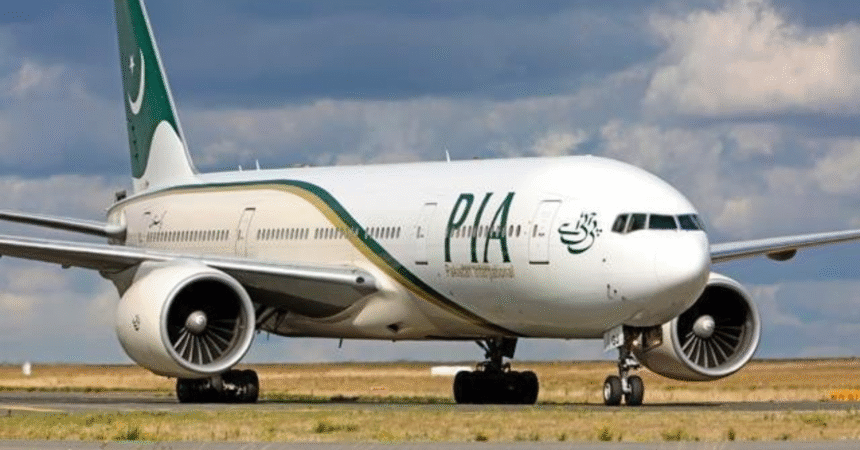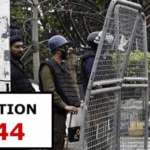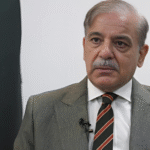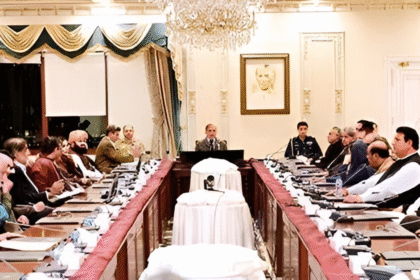In a recent meeting of the National Assembly Standing Committee on Privatization’s sub-committee, officials from Pakistan International Airlines (PIA) provided a detailed account of the challenges facing the national carrier. The discussion highlighted the ongoing financial struggles of PIA and sought to address various concerns raised by committee members regarding the airline’s future.
- Impact of Foreign Airlines on PIA’s Operations
- Regulatory Challenges: Flight Bans
- Staffing Concerns
- Aircraft Induction Challenges
- Questions from the Committee Members
- Questions about Business Model Failures
- Historical Context of Losses
- Flight Ban Explanations
- Open Skies Policy and Competition
- Aircraft Acquisition and Restructuring Efforts
- The Role of Privatization
- Impact on Employees
- Attracting Foreign Investment
The parliamentary committee session was held to scrutinize PIA’s operational strategies and financial health. The general manager of PIA faced rigorous questioning from lawmakers who expressed their concerns over the airline’s persistent losses. This meeting comes at a time when PIA has been grappling with a series of operational and financial setbacks, raising questions about its sustainability and the effectiveness of its management.
Impact of Foreign Airlines on PIA’s Operations
One of the critical points raised during the meeting was the adverse effect of foreign airlines operating additional flights to Pakistan. The PIA official pointed out that the approval of extra flights for foreign carriers has significantly impacted the business of both PIA and other local airlines. This influx of foreign competition dilutes PIA’s market share, making it increasingly challenging for the airline to compete effectively.
The official explained, “The business of PIA and other Pakistani airlines has been negatively impacted by the approval of additional flights for foreign airlines to various Pakistani cities.” This situation has contributed to a decline in PIA’s revenues, as local airlines struggle to maintain profitability in a saturated market.
Regulatory Challenges: Flight Bans
Another major concern highlighted by the PIA representatives was the ongoing bans imposed by the European Union and the United Kingdom on PIA flights. The general manager informed the committee that these bans have led to substantial losses for the airline. As a result, PIA has been unable to tap into lucrative international markets, further exacerbating its financial woes.
The inability to operate flights in key markets has severely restricted PIA’s revenue-generating potential. The committee members were particularly interested in understanding the actual reasons behind these bans and how they could be resolved.
In recent years, the European Union has cited safety concerns and regulatory compliance issues as the main reasons for the flight bans. PIA has faced scrutiny over its safety protocols and operational standards, which has affected its reputation on an international scale. The UK’s Civil Aviation Authority has echoed similar concerns, leading to a loss of trust in the airline’s ability to maintain safe operations.
Staffing Concerns
During the discussion, the topic of staffing came under scrutiny. The PIA official firmly stated that the airline is not overstaffed, countering common perceptions about inefficiency within the organization. He highlighted that there have been no new recruitments in the airline over the past 13 years, suggesting that the existing workforce is adequately sized for current operations.
“PIA’s staff costs are significantly lower compared to airline industry standards. If all aircraft were operational, the current workforce would be sufficient,” the GM stated. This assertion aims to alleviate concerns about potential redundancy and inefficiency within the airline’s workforce.
However, committee members expressed skepticism regarding the management’s ability to optimize staff productivity. Questions were raised about whether existing personnel were effectively trained and utilized, especially in light of the operational challenges facing the airline. The perception of overstaffing is a sensitive topic in Pakistan, where state-owned enterprises often struggle with inefficiency.
Aircraft Induction Challenges
The PIA representative also acknowledged the airline’s failure to induct new aircraft in a timely manner. This stagnation has hindered PIA’s ability to modernize its fleet and compete with other airlines that are continuously updating their aircraft. Without new, fuel-efficient planes, PIA cannot effectively manage operational costs or offer competitive service to passengers.
The absence of timely aircraft induction has been attributed to various factors, including bureaucratic delays, financial constraints, and regulatory hurdles. PIA has also faced challenges in securing financing for new aircraft acquisitions, making it difficult to enhance its fleet and operational capacity.
Additionally, the discussion included references to various restructuring plans that had been developed over the years but were never implemented. These unexecuted plans have left PIA in a precarious financial situation, struggling to adapt to evolving market conditions and passenger expectations. The failure to implement these plans raises questions about the airline’s management and its commitment to long-term sustainability.
Questions from the Committee Members
The committee members posed several pointed questions during the meeting, focusing on various aspects of PIA’s operations and future.
Questions about Business Model Failures
Sehar Kamran, the convener of the sub-committee, queried why PIA’s business model had failed, seeking clarity on the fundamental issues that led to its financial decline. The airline’s inability to adapt to changing market conditions, coupled with regulatory challenges and safety concerns, has resulted in a significant loss of competitive advantage.
Committee member Saba Sadiq raised concerns about the fate of PIA employees post-privatization and why foreign investors had not shown interest in the airline. These questions are critical as they address both the operational challenges and the potential human impact of privatization.
Historical Context of Losses
Another area of inquiry revolved around when PIA began operating at a loss and the factors that contributed to this trend. Understanding the historical context of the airline’s financial challenges is essential for lawmakers as they consider potential privatization and restructuring efforts.
The official indicated that PIA had been facing financial difficulties for over a decade, primarily due to mismanagement, corruption, and external pressures from competitive foreign airlines. The financial downturn has been gradual, with various attempts at recovery proving insufficient to restore profitability.
Flight Ban Explanations
Members were also keen to understand the actual reasons behind the flight bans imposed by international authorities. This issue is pivotal as it directly impacts PIA’s operational scope and revenue potential. The committee sought detailed explanations regarding the timeline of these bans and what measures could be taken to lift them.
The committee was informed that PIA had made efforts to address safety concerns by upgrading its operational standards and seeking certification from international aviation authorities. However, the slow pace of these reforms has hindered the airline’s ability to regain lost markets.
Open Skies Policy and Competition
The implementation of the open skies policy was another focal point of discussion. Committee members wanted to know how many foreign airlines had been granted permission for additional flights and the implications of this policy for domestic carriers like PIA.
The open skies policy, aimed at liberalizing the aviation sector, has allowed several foreign airlines to operate freely in Pakistan. While it was designed to promote competition, the policy has inadvertently disadvantaged PIA, which struggles to compete with well-resourced international carriers that can offer better services and lower prices.
Aircraft Acquisition and Restructuring Efforts
Questions regarding the process of acquiring aircraft on wet lease and the steps taken for PIA’s restructuring over time were also addressed. The committee expressed a keen interest in understanding how PIA plans to modernize its fleet and improve its financial position.
The GM outlined that PIA has explored options for wet leasing aircraft to temporarily boost its operational capacity. However, bureaucratic red tape and financial constraints have delayed these efforts. The restructuring process is expected to include evaluating existing routes, optimizing costs, and enhancing service quality to regain customer trust.
The Role of Privatization
Privatization remains a contentious issue in Pakistan, especially regarding state-owned enterprises like PIA. As the government considers potential privatization, concerns over employee welfare, job security, and the future of the airline loom large.
Impact on Employees
The fate of PIA employees post-privatization is a significant concern for the committee members. Job security remains a critical issue, with many employees fearing layoffs as a result of privatization efforts. The committee sought assurances that the rights and livelihoods of existing staff would be protected during any transition.
Additionally, concerns were raised about how privatization could affect the overall service quality and operational standards of the airline. Stakeholders fear that profit motives may overshadow customer service and safety, leading to a decline in PIA’s reputation.
Attracting Foreign Investment
One of the key reasons for privatization is to attract foreign investment to revive PIA’s operations. However, the lack of investor interest has raised questions about the airline’s long-term viability. The committee discussed the need for transparency, accountability, and clear operational strategies to instill confidence in potential investors.
To make PIA attractive to investors, the government will need to demonstrate a commitment to reforming the airline’s management practices, enhancing safety protocols, and addressing regulatory issues. Without these fundamental changes, attracting foreign investment will remain a challenge.
The National Assembly committee meeting served as a crucial platform for discussing the myriad challenges facing Pakistan International Airlines. The insights provided by PIA officials highlighted the complex interplay of factors contributing to the airline’s financial struggles, from increased competition due to foreign airlines to regulatory challenges posed by flight bans.
As PIA continues to navigate its financial crisis, the recommendations and insights from the parliamentary committee may play a pivotal role in shaping its future. The discussions underscored the need for strategic planning, timely decision-making, and effective implementation of restructuring efforts to ensure the long-term viability of Pakistan’s national carrier.
The committee’s efforts to scrutinize PIA’s operations are part of a broader initiative to ensure accountability and transparency within state-owned enterprises, ultimately seeking solutions that benefit both the airline and the Pakistani public.
As PIA grapples with these ongoing challenges, stakeholders and government officials must work collaboratively to devise effective strategies that will revitalize the airline, restore its reputation, and ensure its sustainability in an increasingly competitive aviation market.
#PIA #PakistanInternationalAirlines #AviationChallenges #NationalAssembly #Privatization #FlightBans #AviationIndustry #ForeignCompetition







